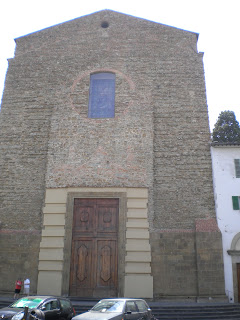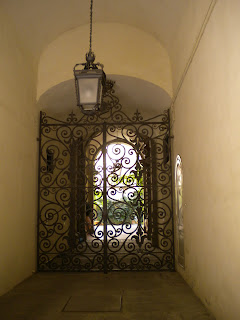via Guicciardini, no. 15
La casa di Francesco Guicciardini.
Guicciardini was a Renaissance historian, one of the first to use government documents to support his arguments. For historians who have ever logged in hours in the archives, you have Guicciardini to thank.
Based on these quotes, I guess it's not surprising that Guicciardini was at times a friend and critic of Machiavelli. In fact, I read somewhere that Machiavelli lived next door for a while.
"One who imitates what is bad always goes beyond his model; while one
who imitates what is good always comes up short of it." --Francesco Guicciardini
"Since there is nothing so well worth having as friends, never lose a
chance to make them." --Francesco Guicciardini
via dei Bentaccordi, no. 15
La casa di Michelangelo Buonarroti.
You might have heard of Michelangelo. He is the inspiration behind this and other more classy examples:
Just to be fair, a few quotes from Mike B:
"Faith in oneself is the best and safest course."
"I am a poor man and of little worth, who is laboring in that art that
God has given me in order to extend my life as long as possible."
"I am still learning."
"I have never felt salvation in nature. I love cities above
all."
"I hope that I may always desire more than I can accomplish."
"I live and love in God's peculiar light."










.JPG)
.JPG)






























.JPG)
.JPG)





